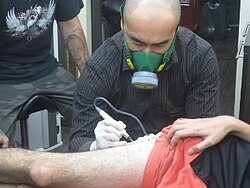The Negro in American history (microform) - men and women eminent in the evolution of the American of African descent (1914) (14597416438)
Identifier: negroinamericanh00crom (find matches)
Title: The Negro in American history (microform) : men and women eminent in the evolution of the American of African descent
Year: 1914 (1910s)
Authors: Cromwell, John W. (John Wesley), b. 1846
Subjects: African Americans -- History African Americans Slavery -- United States
Publisher: Washington : The American Negro Academy
Contributing Library: New York Public Library
Digitizing Sponsor: MSN
View Book Page: Book Viewer
About This Book: Catalog Entry
View All Images: All Images From Book
Click here to view book online to see this illustration in context in a browseable online version of this book.
Text Appearing Before Image:
es, then regent of Spain. Las Casas lived to regret thepart he played by his fateful suggestion. To supply this labor the Slave Trade, as it became known,was begun. La Bresa, a Flemish favorite of Charles V havingobtained from the king a patent containing an exclusive rightof annually importing four thousand Negroes into America, soldit to some Genoese merchants who first brought into a regularform the commerce for slaves between Africa and America.- Sir John Hawkins made three trips to America from theWest Coast of Africa between 1563 and 1567, taking with himseveral hundred of the natives whom he sold as slaves. QueenElizabeth became a partner in this nefarious traffic. So elatedwas she at its profits that she knighted him, and he most happilyselected for his crest a Negro head and bust with arms tightlypinioned. It was a lucrative business and though it at firstshocked the sensibilities of Christian nations and rulers, they 1 Bancroft, Vol. I. 2 Spanish Conquest of America, Vol. I.
Text Appearing After Image:
Branding a Female Slave. , f-lli NEW vof;,. I ^^^IIC UBV.U.Y KLOBN F0UNOATj,,js-L DISCOVERY, COLONIZATION, SLAVERY 3 soon reconciled themselves not only to the traffic, but introducedthe servitude as part of the economic system of their depend-encies in America. That it became a fixture after its introduc-tion in these colonies was due to the prerogative of the HomeGovernment rather than to the importunities of the colonists,especially because it was a source of revenue to the Crown. Within twelve years after its settlement, a Dutch man-of-warlanded in September, 1619, a cargo of twenty slaves at James-town in Virginia. Beginning with this introduction in Virginia slavery graduallymade its way into all the thirteen colonies, and received thesanction of their several legislatures. Contrary to general belief, Negro Slavery in the colonies never existed nor was it origin-ally established hy law, but it rested wholly on custom.^ Slavery where it existed, being the creature of custom, requ
Note About Images
Relevante Bilder
Relevante Artikel
Branding (Body-Modification)Branding, englisch für Brandzeichen, ist eine Form der Body-Modification und eine Skarifikation mit heißem Eisen, also das Erzeugen einer möglichst dauerhaften Schmucknarbe durch heißes, glühendes Metall. Es wird aus symbolischen sowie ästhetischen Gründen oder als Ausdruck der Initiation durchgeführt. Ein weiterer Grund können bereits vorhandene Narben sein, die ihren als manchmal störend empfundenen Charakter durch das Brandzeichen verlieren. .. weiterlesen


